AI-Powered Irrigation Apps: How They Work
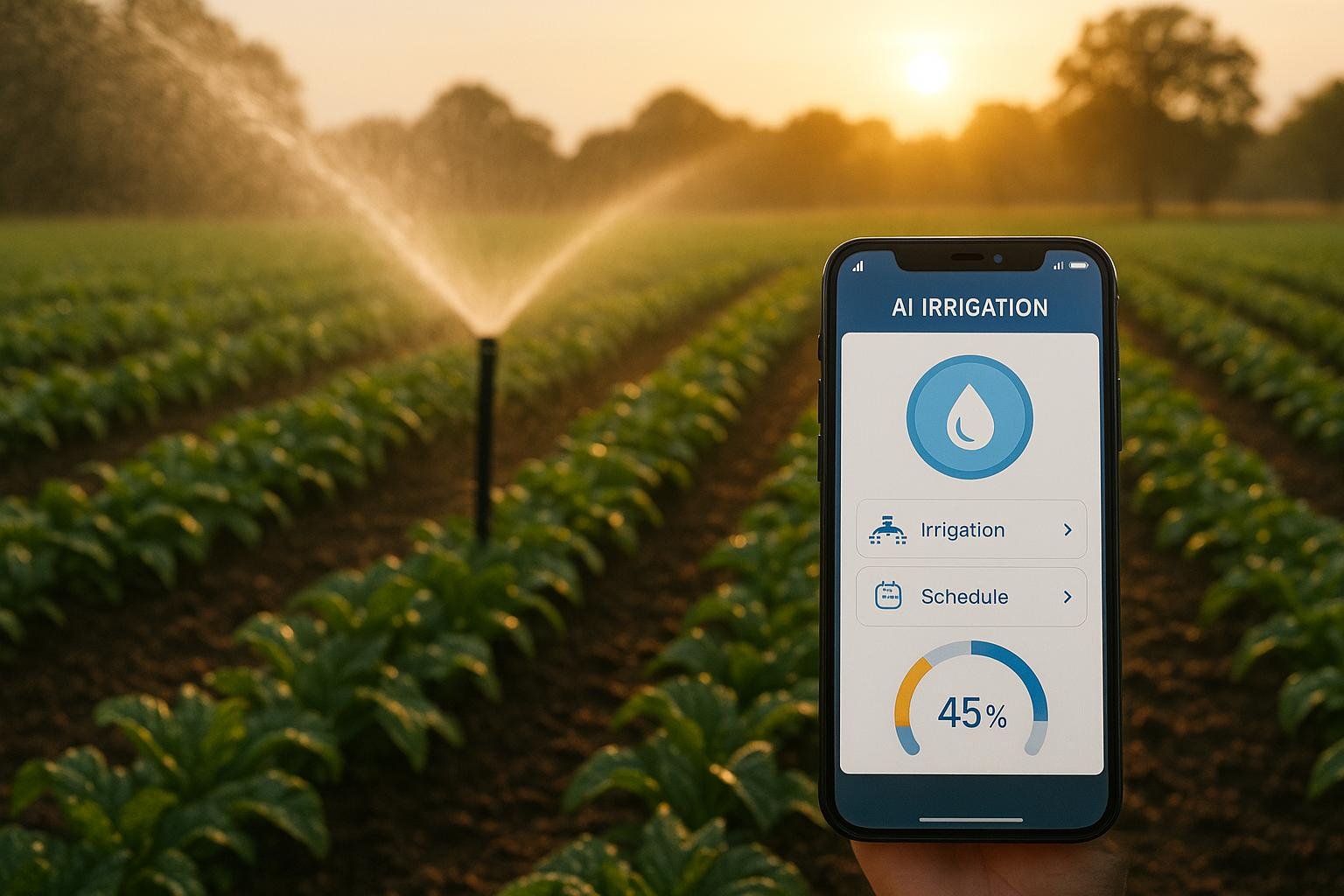
Want to save water, grow healthier plants, and cut garden costs? AI-powered irrigation apps can help you achieve all three. These systems use data from soil sensors, weather forecasts, and satellite imagery to water your garden efficiently and precisely. Here's how they work and why they’re game-changing:
- Save Water: Reduce water usage by up to 50% with real-time adjustments based on weather and soil conditions.
- Boost Plant Health: Tailor watering schedules to plant needs, improving growth and preventing overwatering or underwatering.
- Lower Costs: Cut water bills and energy use while reducing manual effort.
- Easy to Use: Control everything via mobile apps with alerts, schedules, and remote monitoring.
AI irrigation systems adapt to real-time conditions, ensuring every drop of water counts. Whether you’re a home gardener or managing a large farm, these tools are designed to make irrigation smarter and more efficient.
New AI-Powered Irrigation System in Taiwan Helps Farmers Save Water | TaiwanPlus News


Main Parts of AI-Driven Irrigation Systems
AI-driven irrigation systems are built around three key components: data collection, intelligent decision-making, and remote control. Together, these elements create a seamless system for efficient and precise water management.
Soil Sensors and Weather Data Collection
Every smart irrigation system begins with gathering accurate data. Soil sensors play a crucial role by continuously monitoring moisture levels and underground temperatures. This data is the backbone of precise irrigation scheduling, ensuring plants get exactly what they need [9].
In addition to soil sensors, weather data collection systems pull information from weather stations, satellite imagery, and forecasts. This creates a comprehensive environmental profile, enabling the AI to make informed decisions about when and how much to water.
"AI leverages data from various sources - such as weather forecasts, soil moisture sensors, and satellite imagery - to make intelligent irrigation decisions. By continuously analyzing data, AI-driven irrigation systems ensure precise water distribution and efficient resource management." - Ted Wodoslawsky, c3controls [1]
For instance, if rain is expected in the next 24 hours, the AI might delay watering [3]. During heatwaves, it could reschedule irrigation for cooler evening hours to reduce evaporation [7]. To ensure accuracy, it’s important to choose the right sensors and maintain them regularly based on your soil type and crop needs [8]. High-quality data allows machine learning models to cut water usage by as much as 40% [1].
Once the data is in place, automated controls take over to fine-tune water distribution.
Automatic Irrigation Controls
Using the data collected, automatic irrigation controls powered by AI make real-time adjustments to water flow [4]. Many systems integrate with Variable Frequency Drives (VFDs) to optimize pump efficiency, helping to lower energy costs [1]. These controls work in real time, ensuring water is distributed precisely when and where it’s needed [1].
For example, a vineyard in California reduced its water usage by 35% without compromising crop quality, thanks to AI [1]. Meanwhile, a greenhouse in the Netherlands saw a 20% increase in crop yield by optimizing water distribution based on humidity and plant transpiration data [1]. AI systems can also tailor water flow to specific crops and historical trends [7]. In Australia, satellite-based AI helped a large farm cut irrigation by 25% while improving crop uniformity [1]. These systems are designed to integrate with existing equipment, making upgrades straightforward and cost-effective.
All these adjustments can be monitored and fine-tuned through mobile apps.
Mobile App Connection and Control
Mobile apps add another layer of control and convenience to AI-driven irrigation systems. These apps provide real-time updates, let users tweak schedules, and send alerts when needed [10]. With remote monitoring, users can program settings and let the system handle the rest, significantly reducing manual effort and minimizing human error [10].
Take Frosty Vineyards in Napa Valley, for example - by using mobile-monitored AI irrigation, they reduced water usage by 30%, showcasing the system’s practical benefits [10]. These apps simplify complex AI data, turning it into actionable insights that even novice gardeners can use effectively.
How AI Makes Real-Time Irrigation Decisions
AI-powered irrigation systems stand out because they can process vast amounts of data and make quick, precise decisions about water distribution. Unlike traditional timers that stick to fixed schedules, these systems analyze multiple factors to determine when, where, and how much water is needed. Combined with the convenience of remote adjustments through mobile apps, AI transforms irrigation into a dynamic and efficient process.
Real-Time Data Processing and Watering Decisions
AI algorithms operate like highly advanced automation systems, continuously analyzing data from sources like soil moisture sensors, weather stations, and satellite imagery. This data is processed in real time, turning raw inputs into actionable watering strategies[11].
For instance, if soil moisture sensors detect dry conditions, the AI cross-references this with weather forecasts, temperature readings, and the specific needs of the plants. If rain is expected soon, the system might delay watering to prevent waste. Similarly, during periods of high evapotranspiration - when plants lose water rapidly through their leaves - the system may schedule watering for early morning or evening, allowing plants to absorb moisture more effectively[12].
Machine learning plays a key role in processing complex data from satellites and drones. The system evaluates factors like temperature, soil type, sunlight exposure, and humidity to create precise watering commands tailored to each section of the garden[4].
Predicting Future Water Needs
AI irrigation systems don’t just react to current conditions - they also predict future needs. Using predictive analytics, these systems integrate historical data, weather forecasts, and plant growth stages to develop forward-looking watering schedules. This approach adjusts the depth and frequency of irrigation as conditions evolve[11].
For example, the AI reviews past rainfall patterns and upcoming forecasts to ensure plants get water only when necessary. It also considers different irrigation methods, such as spray heads, drip emitters, or bubblers, alongside soil absorption rates to craft highly accurate watering plans[12].
System Learning and Performance Improvement
Over time, AI irrigation systems improve through continuous learning and adaptation. Each watering cycle generates new data, helping refine future decisions. The system monitors plant health, soil moisture changes, and water efficiency to fine-tune its algorithms[13]. If specific watering schedules consistently lead to better plant health or higher yields, the AI incorporates these insights, potentially reducing water usage by as much as 40%[1].
These systems also adapt to environmental changes and seasonal shifts. As climates evolve or new plant varieties are introduced, the AI identifies the best irrigation strategies for specific soil types, plant combinations, and weather conditions. Performance tracking allows the system to detect and correct inefficiencies, such as over- or under-watering in certain zones.
Additionally, integration with Variable Frequency Drives (VFDs) boosts energy efficiency. By determining the optimal pump speeds for different scenarios, the AI can lower energy costs by 20–30%[1]. Over time, these systems evolve into highly intelligent water management networks, capable of understanding and responding to the unique needs of each garden zone. This adaptability ensures efficient irrigation that aligns with changing conditions and supports sustainable water use.
🚀 Ready to Reinvent Your Garden?
Join thousands of homeowners who have transformed their gardens using our AI design tool. Upload one photo to explore endless possibilities.
Get your AI garden designs →Main Benefits of AI-Powered Irrigation Apps
AI-powered irrigation apps are changing the way water resources are managed, offering smarter solutions for homeowners and landscapers alike. These systems do more than just automate watering - they fine-tune it, helping save money, conserve water, and support healthier plants across the varied climates of the U.S.
Water Conservation and Waste Reduction
One of the standout features of these apps is their ability to significantly cut water usage while keeping landscapes lush. Unlike older systems prone to overwatering, AI-driven tools deliver just the right amount of water, adjusting schedules in real time based on factors like sudden weather changes.
Take the COALA project in Australia, for example - it boosted irrigation efficiency by 20% [2]. Smart meters in these systems track water flow and flag irregularities, helping users quickly detect leaks [14]. Some precision irrigation controllers have even slashed water usage by over 40% [2]. This kind of precision not only saves water but also creates the perfect conditions for plants to thrive, leading to better growth and healthier crops.
Better Plant Health and Growth
AI irrigation apps are designed to meet plants' specific needs, tailoring watering schedules to factors like soil type, plant species, and local weather. This precision eliminates common issues like water stress or overhydration that often plague traditional systems.
These systems also monitor key indicators such as plant stress, leaf wetness, and canopy temperature. By catching early signs of disease, pests, or nutrient issues, they help prevent bigger problems down the line [3][4]. For instance, Green Fields Co. in Kansas adopted AI-driven irrigation and saw a 25% increase in crop yields, which directly boosted farmer incomes [10]. Similarly, the fieldWISE program identified over 100,000 hectares of fields with critical soil moisture issues, helping 4,540 farmers improve their water management [3]. With continuous monitoring, these systems can achieve 30–40% greater water efficiency compared to manual methods [15]. On top of fostering stronger plant growth, they also cut operational costs.
Lower Costs and Energy Use
By integrating with mobile apps, AI-powered irrigation systems make it easier to control and monitor water use while significantly cutting costs. Automating what used to require hands-on labor reduces the risks and expenses tied to both overwatering and underwatering [16].
AI can also optimize energy use. For example, pump control systems powered by AI can cut electricity consumption by 20–30% [1], while low-pressure drip emitters can reduce pumping energy by over 50% [2]. Automation further trims labor costs by eliminating manual adjustments. Plus, by maintaining ideal growing conditions, these systems often reduce the need for costly chemical treatments [2]. Many precision irrigation systems pay for themselves in less than three years [2], and government grants or subsidies can make the upfront investment even more affordable [16].
sbb-itb-4d6a8dd
Mobile App Features and How They Work
AI-driven irrigation apps turn what used to be a complex process into simple, user-friendly controls you can manage right from your smartphone.
Alerts and Custom Settings
These apps go beyond basic controls, offering real-time updates and adjustments tailored to your garden's needs. With real-time data, they send notifications and automatically tweak water flow as needed [1]. For example, if the system detects low water levels or unusual flow rates, you'll get a clear alert with actionable steps to resolve the issue [18].
You can also set custom moisture thresholds. If soil moisture drops below your chosen level, the system automatically kicks in to irrigate [17]. The AI adapts watering schedules to fit the specific needs of different areas in your yard, promoting healthy growth while saving water. It can even adjust based on rainfall predictions, ensuring no water goes to waste [17]. By analyzing historical weather data, these apps fine-tune irrigation plans to match expected conditions. Beyond watering, they offer tools for comprehensive garden care: dashboards with tips for fertilization, planting schedules, and plant recommendations based on your local environment. You also get real-time visuals of soil moisture, water usage, and plant health [18].
Smart Home Device Connection
These apps also integrate with smart home devices, making irrigation management even easier. They connect with popular voice assistants like Alexa and Google Assistant [20], and work with platforms such as SmartThings or Home Assistant for remote monitoring and control [20]. Smart hubs like Samsung SmartThings and Apple HomeKit help sync all your devices for a seamless experience [19].
"Smart hubs unify all devices in the home, creating a cohesive system that learns your preferences and enhances convenience. They ensure everything works in sync to deliver a seamless, effortless experience."
– Maksym Trostyanchuk, Head of Delivery at Inoxoft [19]
Real-world examples showcase the benefits. Many Lennar homes, for instance, feature devices like Ring Video Doorbells, Schlage Encode smart locks, and Honeywell Pro Series thermostats, all controllable through Amazon Alexa [19]. These homes also use the Flo by Moen system, which employs AI to detect leaks and automatically shut off water [19]. Smart technology is becoming increasingly popular - by 2023, 22.3% of U.S. homes had smart features, and 77% of buyers and renters now prioritize them. The global smart home market is expected to hit $338.28 billion by 2030 [19].
Support for U.S. Climates and Growing Conditions
Using weather forecasts, soil sensors, and satellite imagery, these apps adapt irrigation practices to suit the diverse climates across the U.S. - from the dry Southwest to the humid Southeast [1]. Machine learning models analyze both historical and real-time data to create location-specific watering schedules [1]. IoT devices further refine this process, collecting details about soil moisture, temperature, and humidity to determine exact water needs [1].
Advanced weather forecasting takes it a step further. Low-orbit satellites and radio occultation data provide more precise predictions than standard weather apps [21]. For greenhouses or other covered spaces, these apps deliver AI-driven forecasts tailored to indoor conditions [21]. They also offer trend analyses and early warnings about environmental stress, helping you make proactive adjustments [21].
Success stories underline these benefits. For instance, a California vineyard using an AI irrigation system cut water use by 35% while maintaining crop quality [1]. These systems can even predict risks like extreme weather, dew formation, and pest outbreaks [21].
Platforms like AIGardenPlanner enhance this experience by offering personalized, location-specific recommendations. These tools provide growing guides and maintenance schedules tailored to your climate zone, ensuring your irrigation system aligns perfectly with a garden plan designed for your local conditions. Together, they support efficient watering and thriving plants.
The Future of AI in Irrigation
AI-powered irrigation is set to revolutionize how we manage water and support plant growth, offering smarter, more efficient systems driven by cutting-edge technologies.
Key Advancements in AI-Driven Irrigation
AI-based irrigation systems are already making waves by cutting water usage by up to 50% and increasing crop yields by 30% [5]. These systems also reduce energy consumption by as much as 50% [2][24] and lower the need for chemicals by 50% [6]. By delivering water more precisely, plants grow healthier, resist pests and diseases better, and require fewer chemical treatments.
Looking ahead, tools like digital twins, blockchain technology, and solar-powered systems are poised to take these advancements even further. Digital twins will allow farmers and gardeners to simulate various irrigation strategies before applying them in real life, helping them make informed decisions [22]. Blockchain integration will bring transparency to water usage and resource management [1]. Meanwhile, solar-powered AI systems will reduce reliance on traditional energy sources, making irrigation more sustainable and accessible [1].
Future AI models will also tackle challenges like drought prediction, water optimization during extreme weather, and real-time irrigation adjustments as machine learning capabilities improve [1][23]. These developments will not only boost resource efficiency but also enable seamless integration of irrigation with overall garden planning.
How AI Tools are Transforming Gardening
The next big step for smart gardening involves combining AI irrigation with garden planning. Platforms like AIGardenPlanner are already blending AI-driven garden design with precise irrigation control, creating an ecosystem where plants thrive with minimal resource waste.
In the near future, hyper-precision farming technologies will take this integration to the next level. Using real-time sensor data, satellite imaging, and market trends, these systems will go beyond watering to optimize every aspect of garden operations [22]. Each plant will receive water tailored to its specific needs, ensuring maximum efficiency.
"In 2025, AI will effectively be the driving force transforming customer experiences and business operations, enhancing intelligent workflows and maximizing efficiency."
As climate change leads to more unpredictable weather, AI will play a crucial role in helping gardeners adapt. These systems will forecast extreme weather events, assess plant vulnerabilities, and recommend strategies for adaptive planting [22]. This ensures that garden planning and irrigation work in harmony, no matter the conditions.
What’s exciting is that these technologies aren’t just for large-scale farms anymore. Thanks to open-source platforms, affordable sensors, and easy-to-use mobile apps, even home gardeners can access the benefits of AI irrigation. For instance, the fieldWISE platform has helped over 4,500 farmers optimize water use across 100,000 hectares of fields by identifying areas with soil moisture stress [2].
FAQs
How do AI-powered irrigation apps use weather data to improve watering schedules?
AI-powered irrigation apps use weather data like rainfall, temperature, and humidity to design smarter watering schedules. By analyzing real-time conditions and forecasts, these apps can tweak irrigation plans automatically - cutting back on water during rainy days and boosting it when things get dry.
This approach not only avoids overwatering but also conserves water while ensuring plants receive just the right amount of moisture to thrive. The outcome? A more efficient, water-conscious, and stress-free way to care for your garden.
What are the key advantages of using AI-powered irrigation systems for gardens and farms?
AI-powered irrigation systems bring a range of benefits to both small-scale gardens and large farming operations. By using real-time data - like soil moisture levels and weather forecasts - these systems deliver the exact amount of water plants need. The result? Less water wasted and a more environmentally friendly approach to gardening and farming.
For large farms, these systems streamline resource management and improve efficiency, often leading to a 20–30% increase in crop yields. On the other hand, small garden owners can enjoy easier, more convenient watering routines that save water and promote healthier plants. Whether you're managing acres of farmland or tending to a backyard garden, AI-driven irrigation can save time, reduce effort, and help plants thrive.
How do AI-powered irrigation apps improve water management and gardening efficiency?
🎨 Visualize Your Dream Garden Today!
Transform any outdoor space into a professional landscape design in minutes. Just upload a photo, choose your style, and let our AI do the rest.
Start your garden transformation now →AI-Powered Irrigation Apps: A Smarter Way to Manage Water
AI-powered irrigation apps are changing the game for water management by giving users the ability to monitor and control their irrigation systems from anywhere. These apps deliver real-time insights into soil moisture levels, weather forecasts, and plant requirements, enabling users to make smarter decisions that prevent overwatering and cut down on water waste.
Designed with intuitive interfaces, these tools make it easy to schedule and adjust watering routines with precision. They cater to specific climates and garden needs, ensuring plants get exactly the care they require. The result? Healthier plants, better yields, and a gardening experience that's both efficient and eco-conscious.
Related posts
Related Articles

Best Time to Plant Flowers in Iowa: A Comprehensive Guide
Discover the optimal times for planting flowers in Iowa based on climate and soil conditions. Learn the best techniques for maintaining and protecting your flower garden.
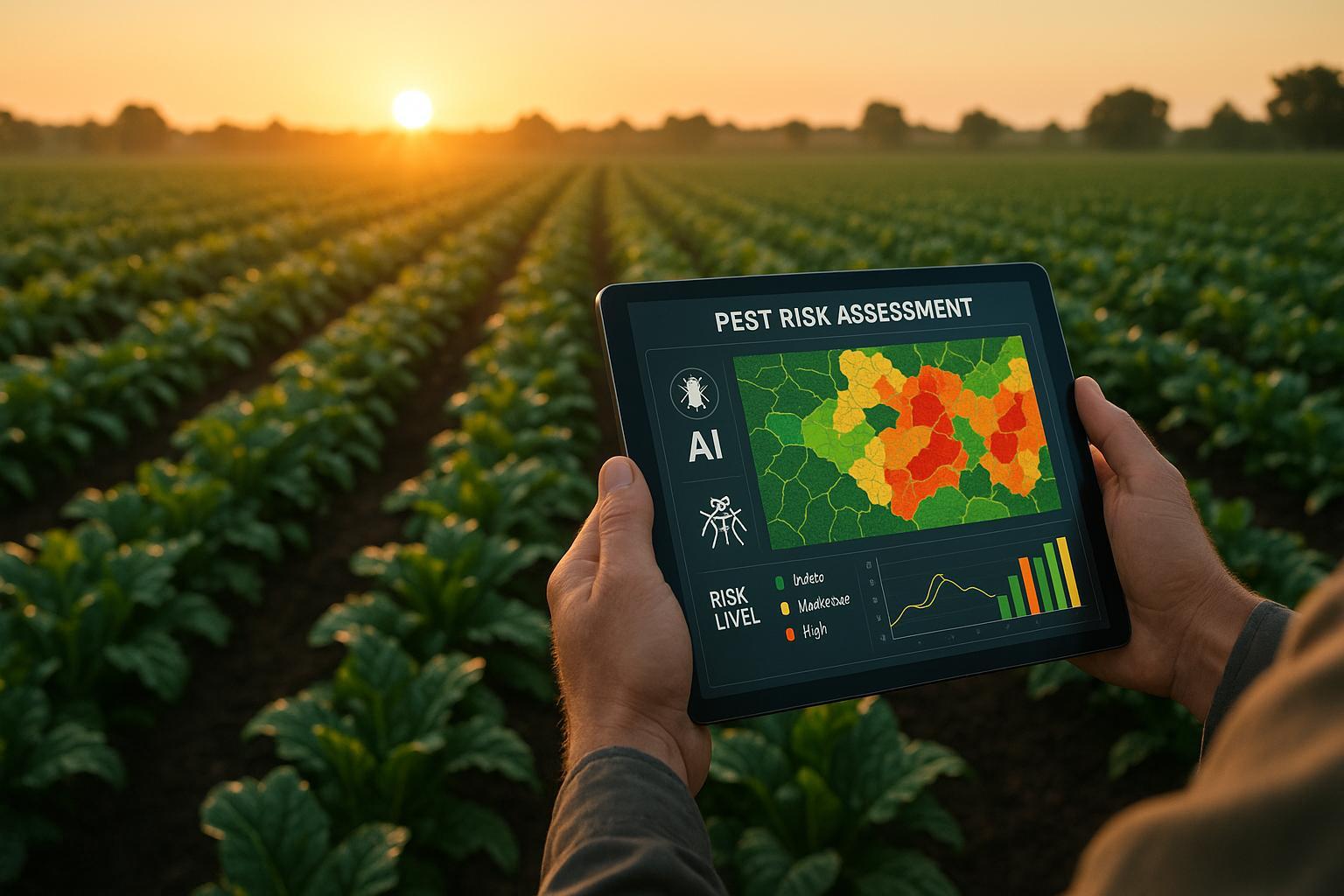
AI Tools for Pest Resistance Risk Assessment
Explore how AI tools are transforming pest management for farmers, reducing pesticide use and enhancing crop yields through advanced technology.

Top AI Tools for Integrated Pest Management
Explore how AI tools are revolutionizing pest management, enhancing efficiency while significantly reducing pesticide usage for sustainable agriculture.
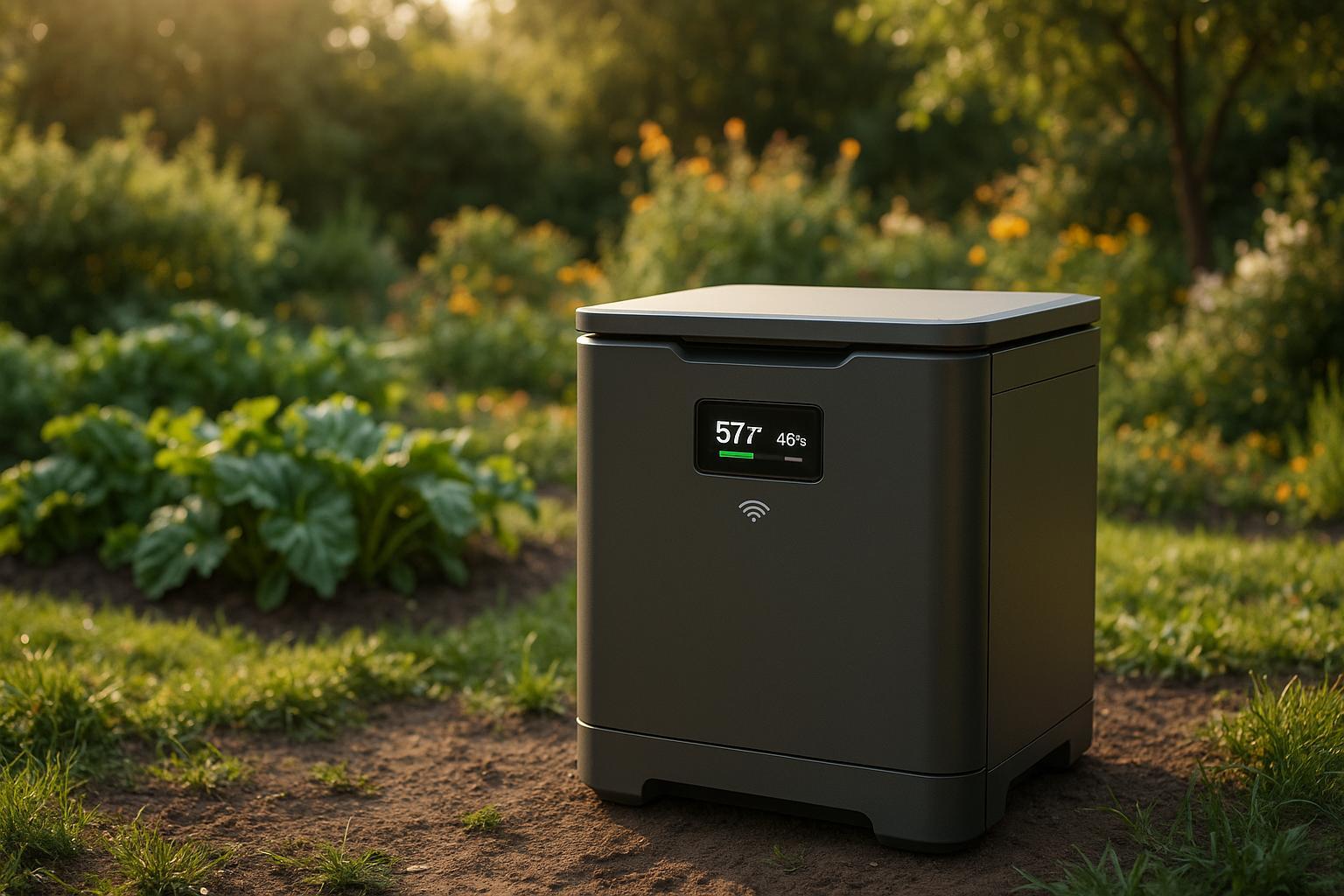
Ultimate Guide to IoT-Integrated Composting Systems
Explore how IoT-integrated composting systems automate monitoring to enhance compost quality, speed up the process, and reduce environmental impact.
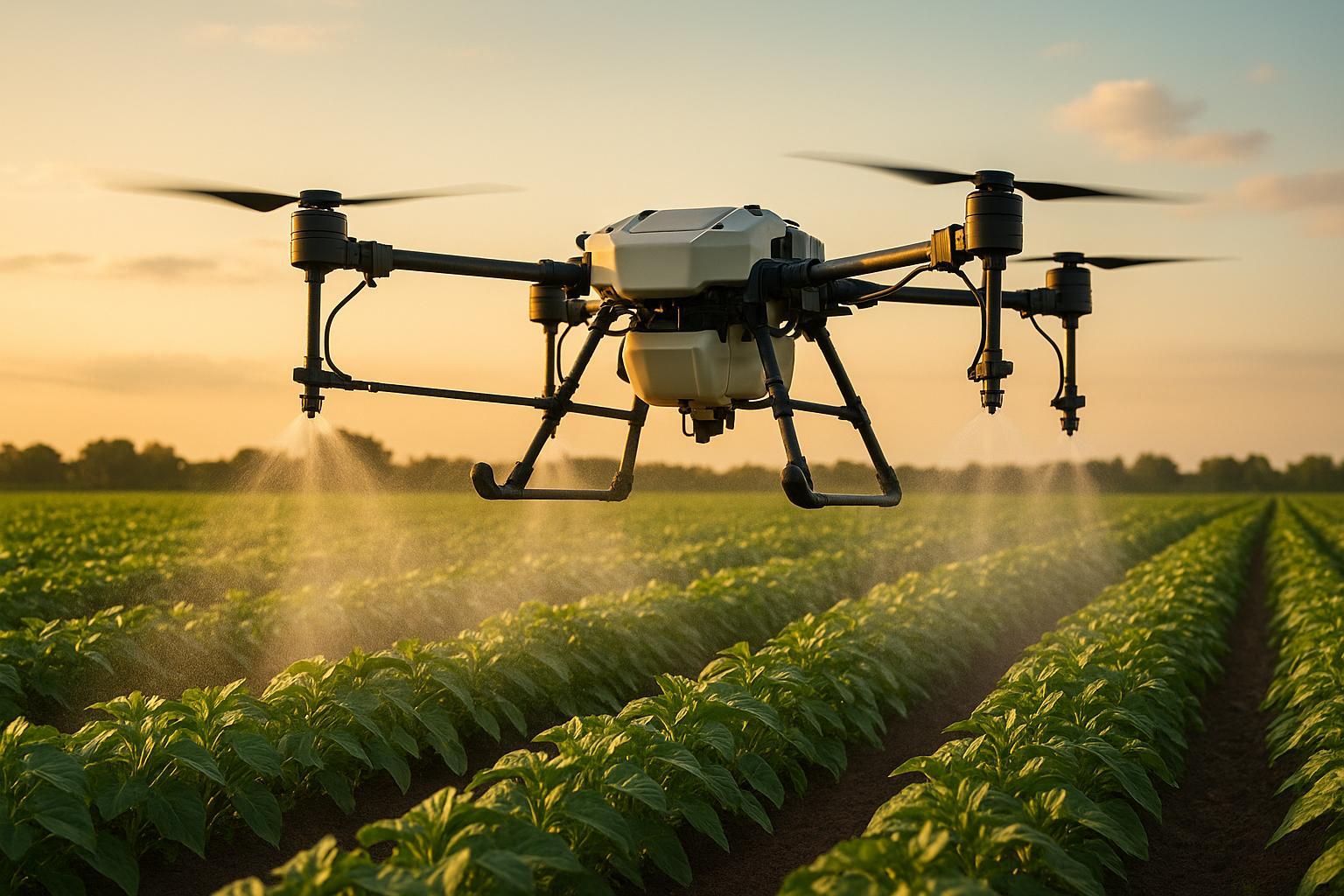
AI in Spray Coverage: How It Improves Accuracy
AI technology is revolutionizing agricultural spray coverage, enhancing precision while cutting costs and reducing environmental impact.
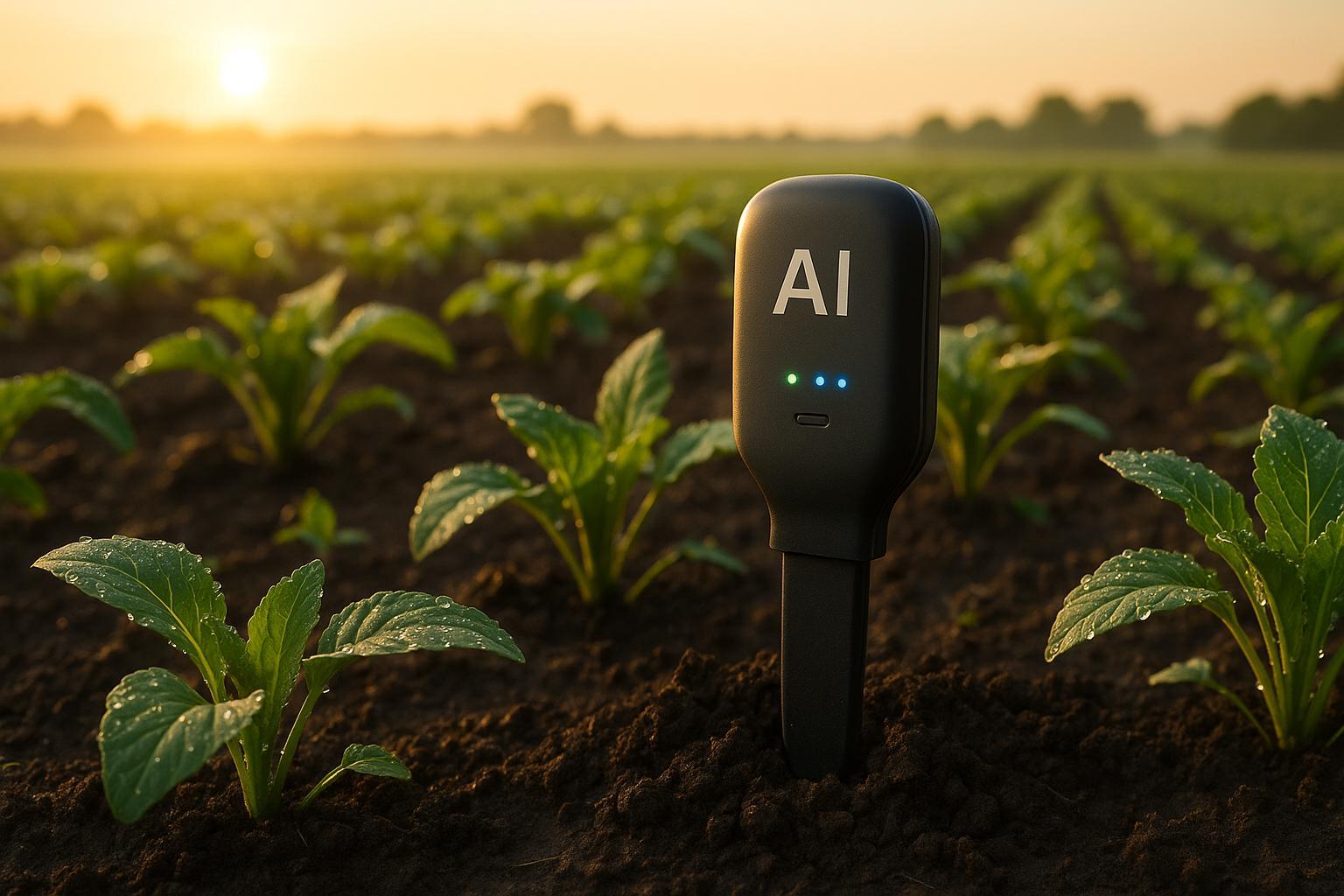
How AI Soil Sensors Monitor Moisture and Nutrients
Explore how AI soil sensors enhance farming efficiency by monitoring moisture and nutrients, optimizing irrigation, and boosting crop yields.